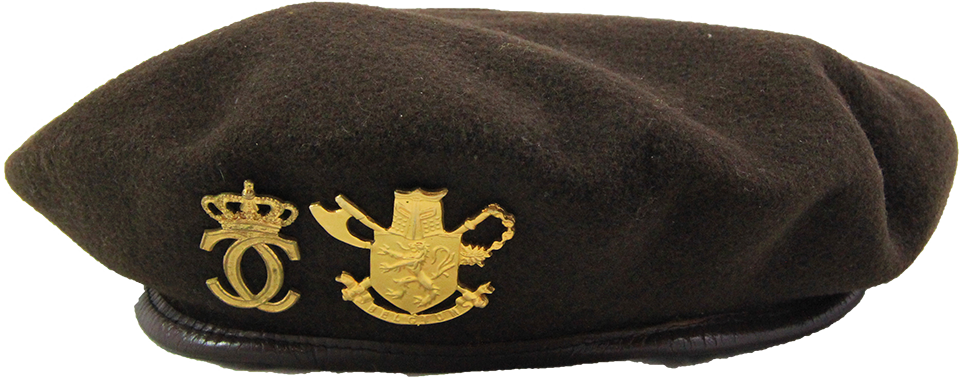
Joseph “Tun” Wagener’s brown beret
© Wagener/MNHM
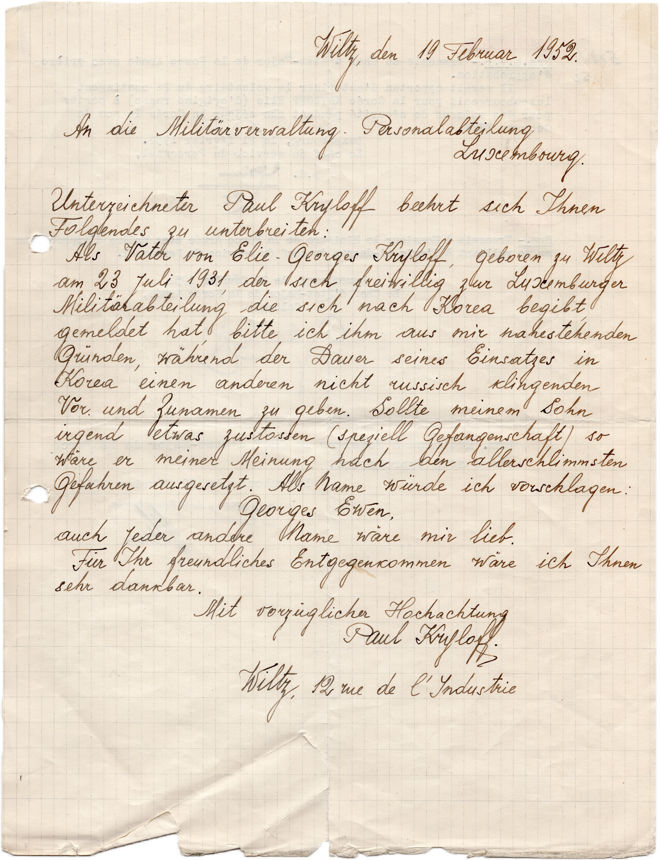
Request by Paul Kryloff (19.02.1952),
Elie Kryloff’s father, to change his son's name because he feared that his Russian-sounding name could have serious consequences in case of war captivity for this descendant of Russian émigrés having fled the Bolsheviks after the Civil War.
© Armée Luxembourgeoise
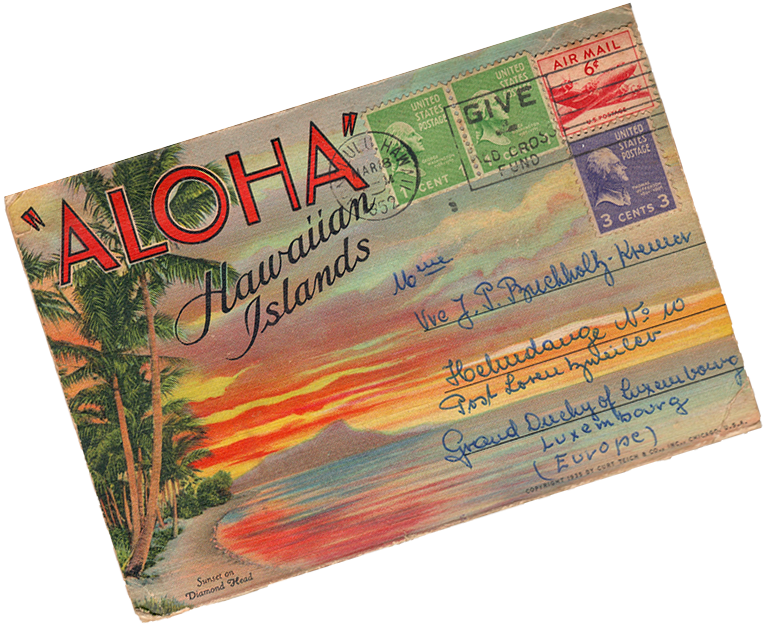
Postcard from Hawaii
© Buchholtz/MNHM

Raymond Beringer’s medal collection,
including the prestigious “Bronze Star” awarded to him in 2001 by the US Government for exemplary bravery during the battle of Chatkol.
© Beringer/MNHN
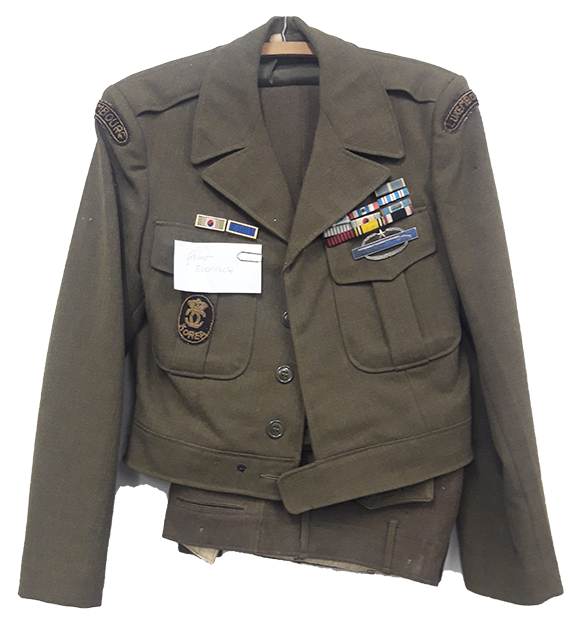
Gilbert Buchholtz's Korean War veteran uniform
© Buchholtz/MNHM
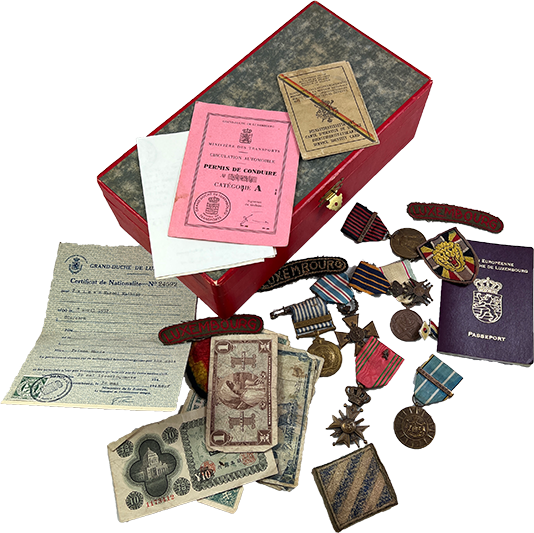
Red memorabilia box
of Marcel Feinen, containing documents, photos, banknotes, coins, medals, ribbons and badges.
© Feinen/MNHM
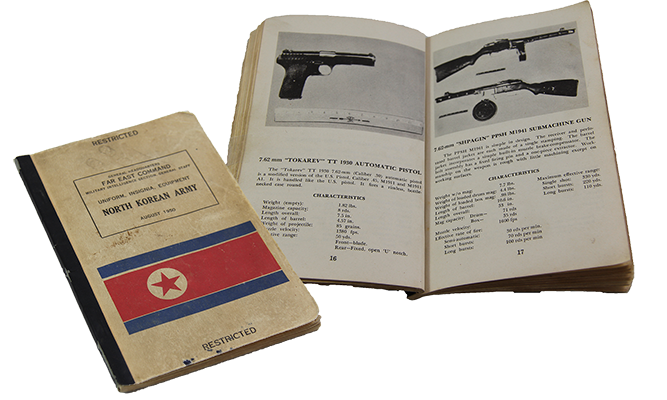
Military Handbook
© Moyen/MNHM
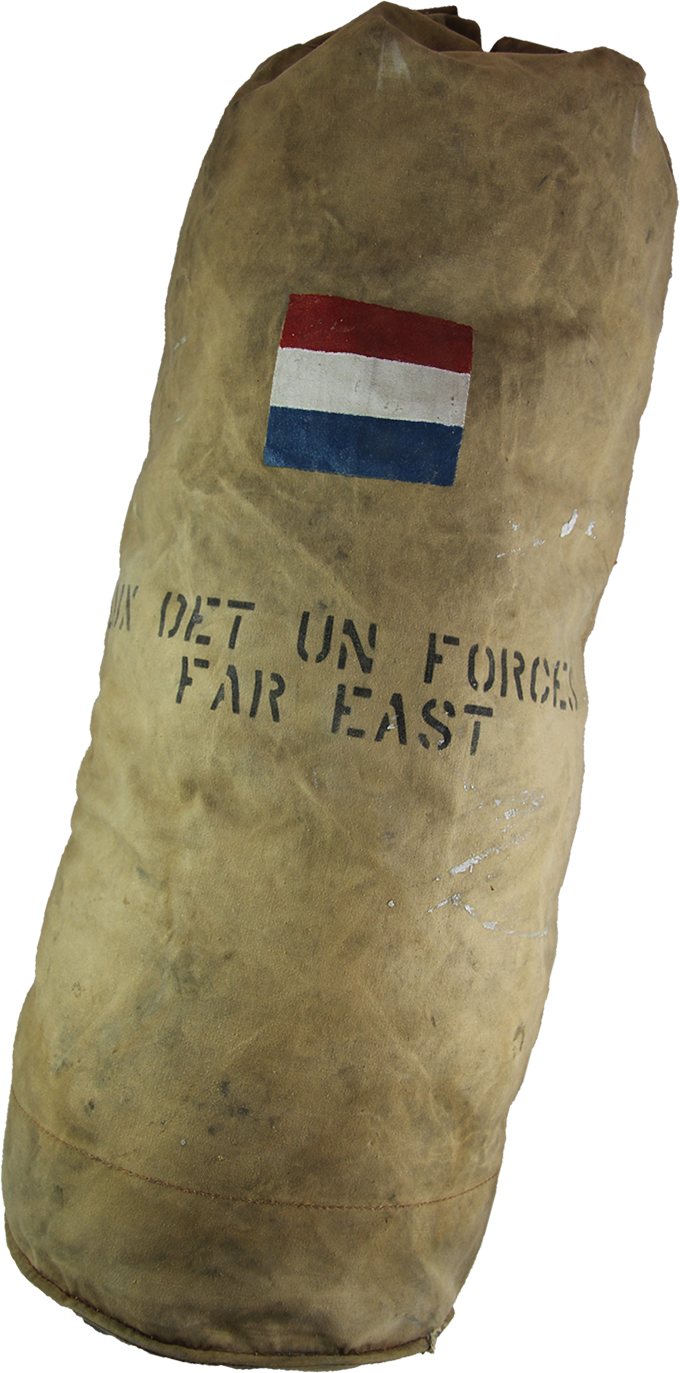
The Duffle Bag
contained everything the soldier needed to survive in the field (clothes, tents, dishes, etc…). It was his only luggage item.
© Hauffels/MNHM
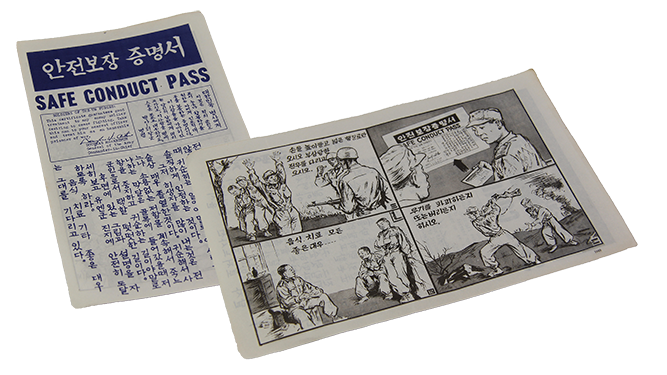
Safe Conduct Pass
© Stoffel/MNHM
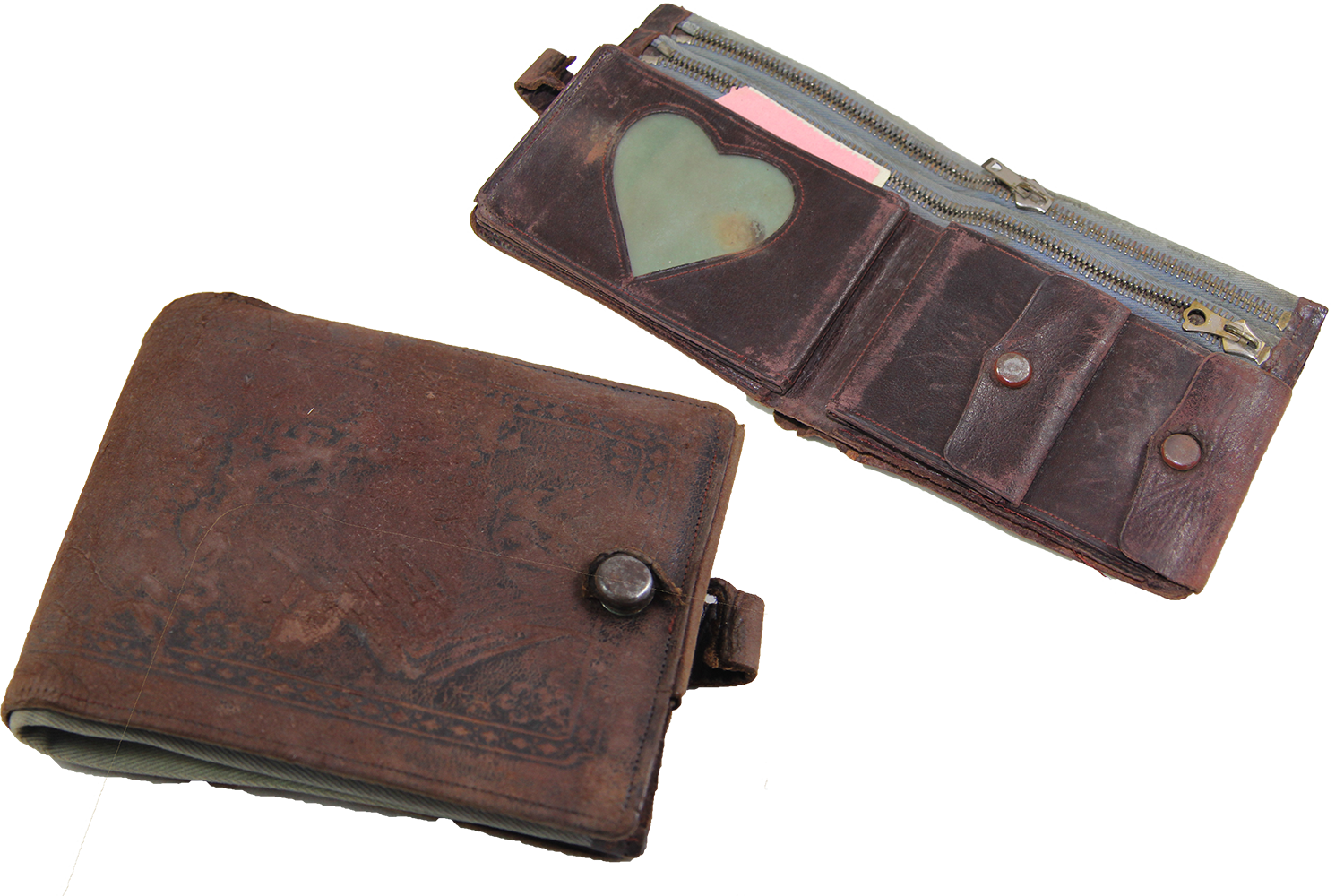
Leather wallet
of the fallen Korean War veteran Cpl. Roger Stütz.
© Stütz/MNHM
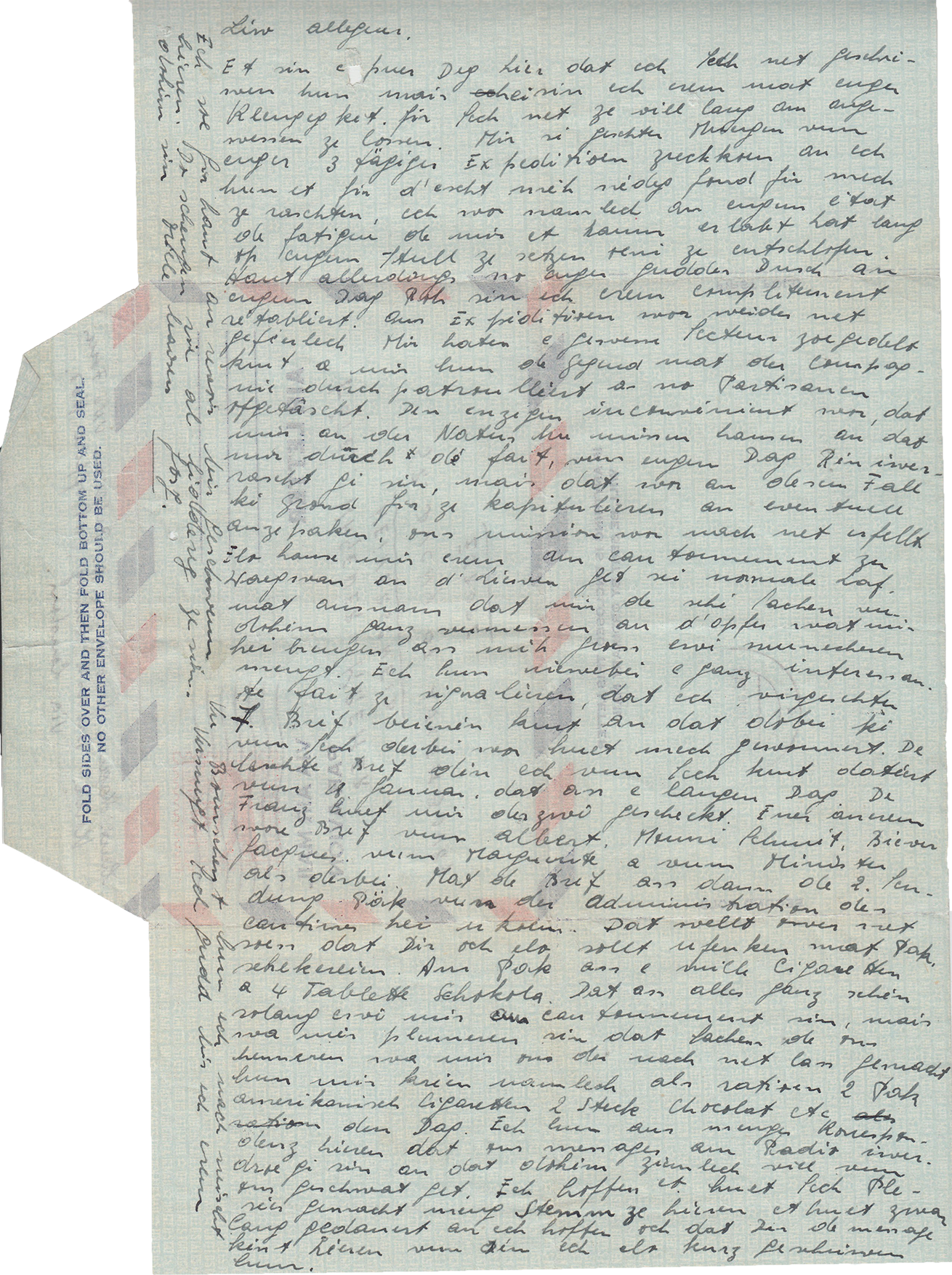
Military camp in Waegwan, 24.02.1951. (First contingent)
© Bard
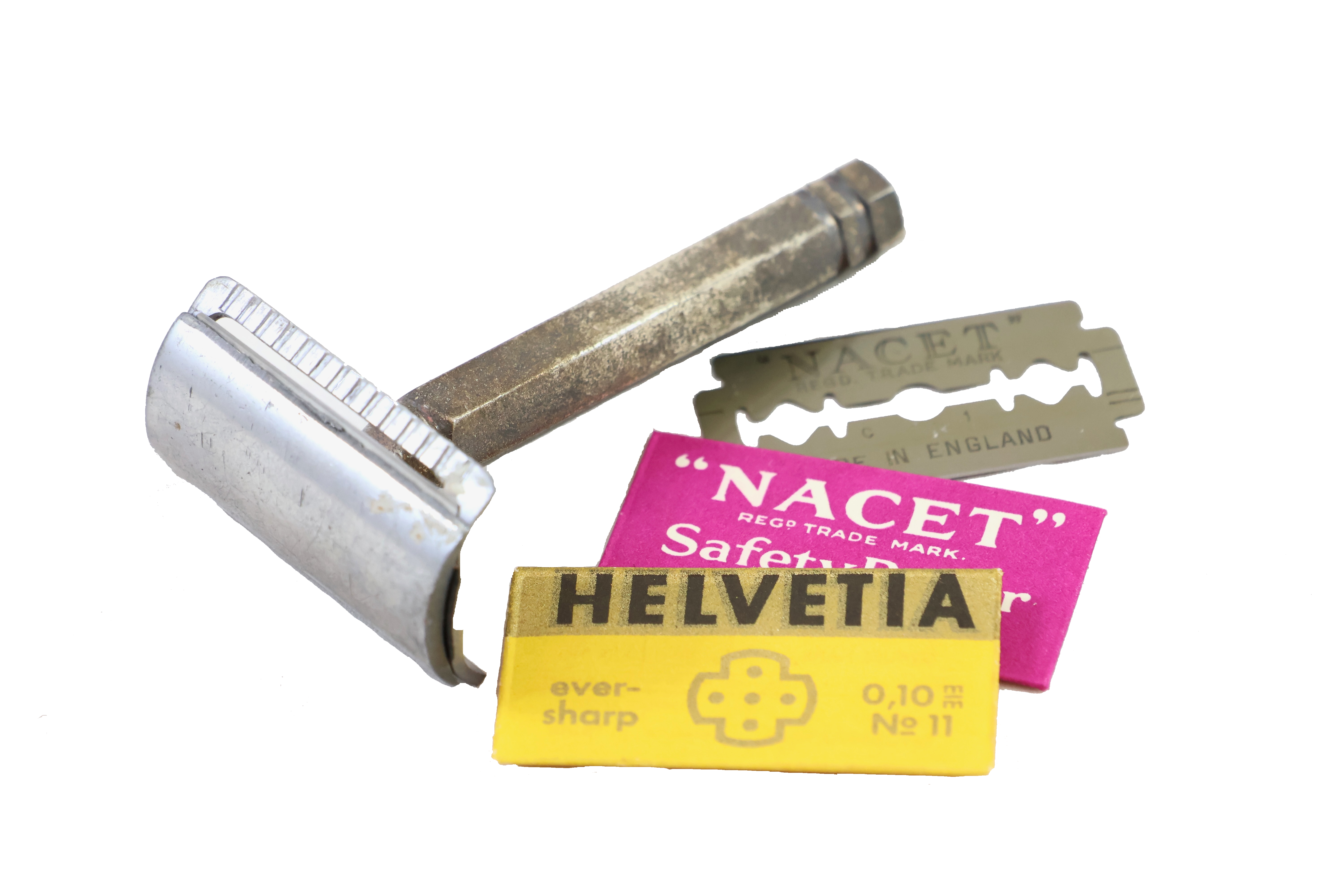
Razor blades
As a “war souvenir”, Walter gifted his wife’s family loads of English razor blades when he returned from Korea.
© Photo: Ben Felgen; Medernach-Weirich.
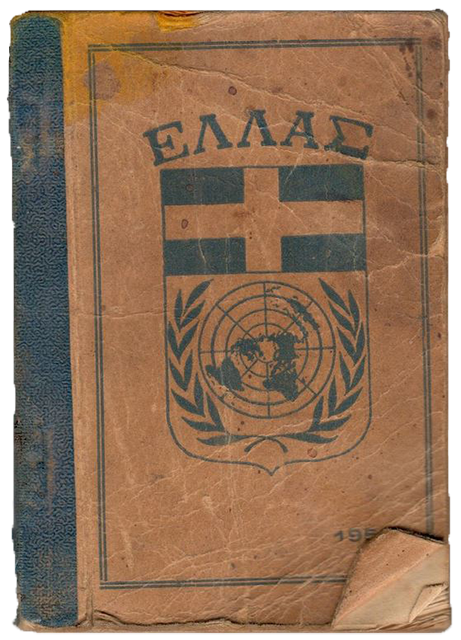
Greek field manual
© Buchholtz/MNHM
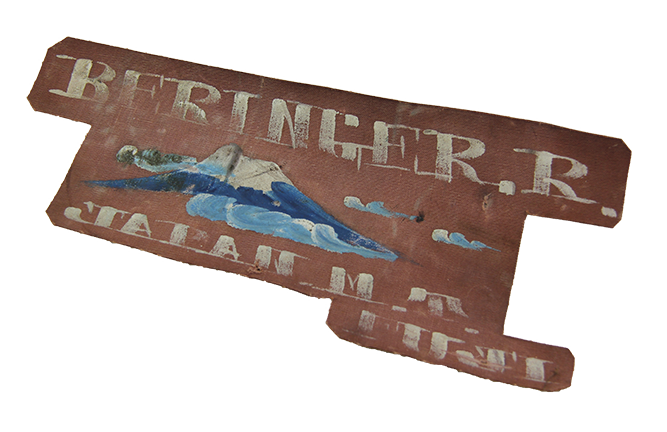
Souvenir from Japan
depicting the famous Fuji, the highest mountain in Japan, with the heading “BERINGER R.”.
© Beringer/MNHM
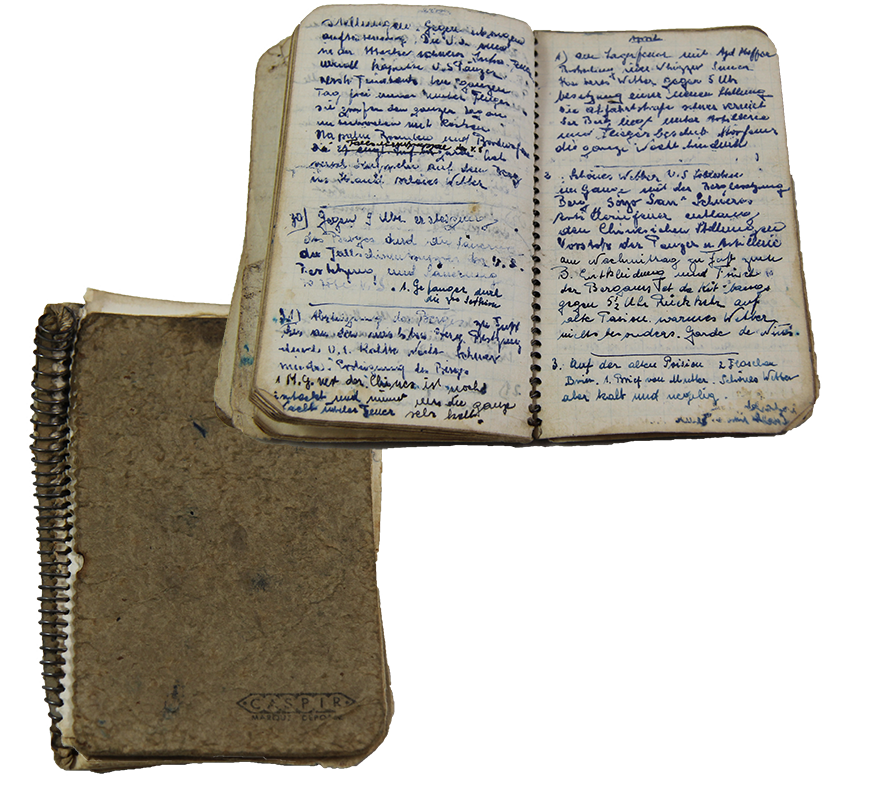
Gilbert Buchholtz’s diary,
© Buchholtz/MNHM

In the field, 26.03.1951. (First contingent)
Letter of Lt Joseph “Tun” Wagener to his family Hotel Wagener-Kremer in Heinerscheid.
© Bard
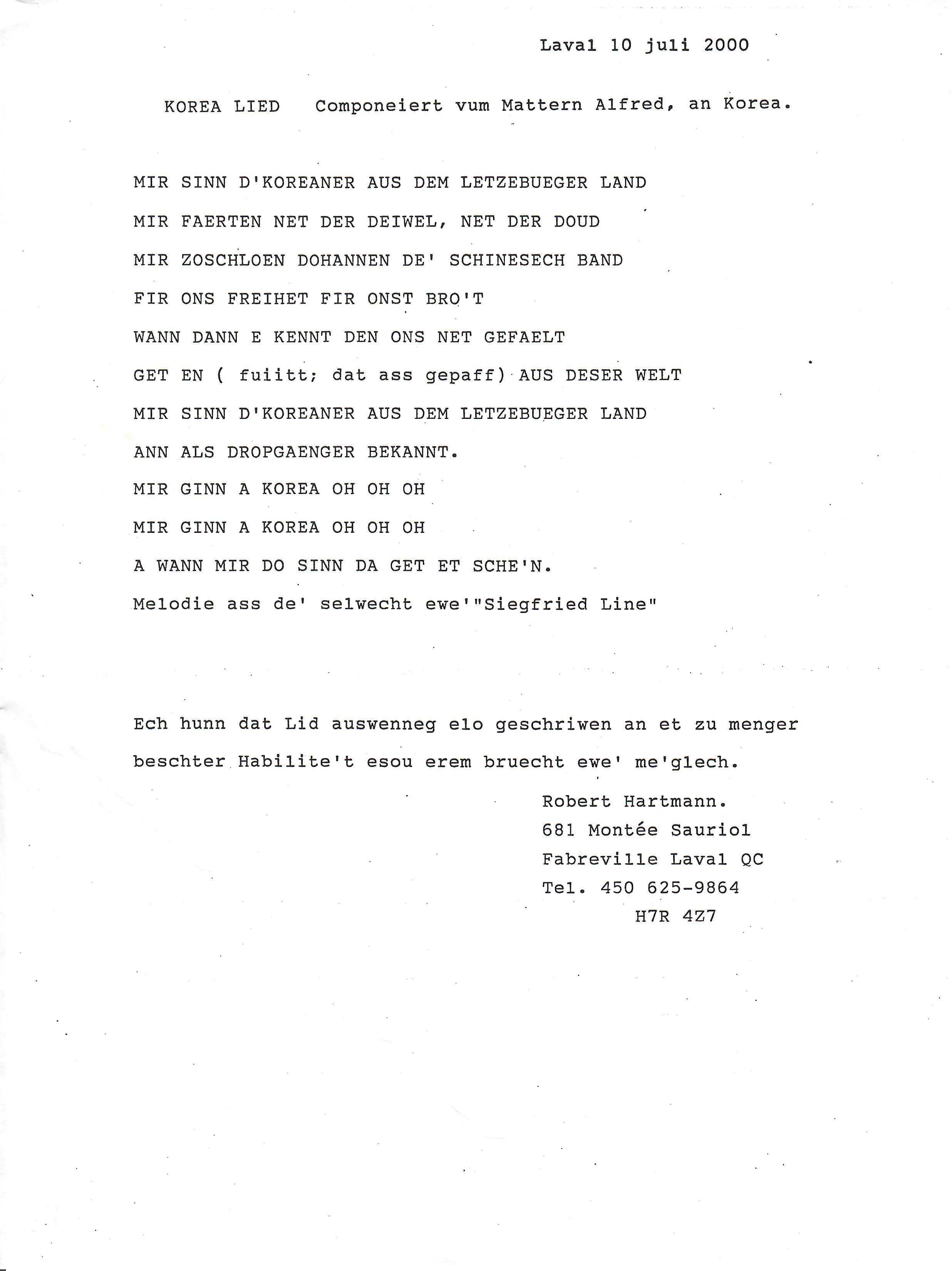
The Korea-Song
played by the infamous Liltz-Schmit Duo (2022)
© Hartmann/MNHM
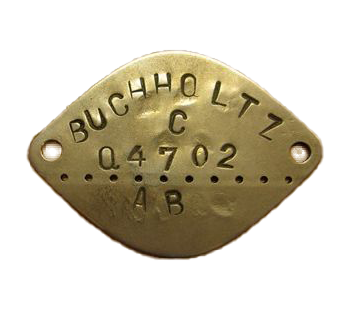
Gilbert Buchholtz's Dog Tag
issued by the Luxembourgish Army. It bears all the necessary personal information needed to identify fallen or unconscious soldiers in the field of action.
© Buchholtz

Rare color pictures by Lucien Wagener
© Wagner
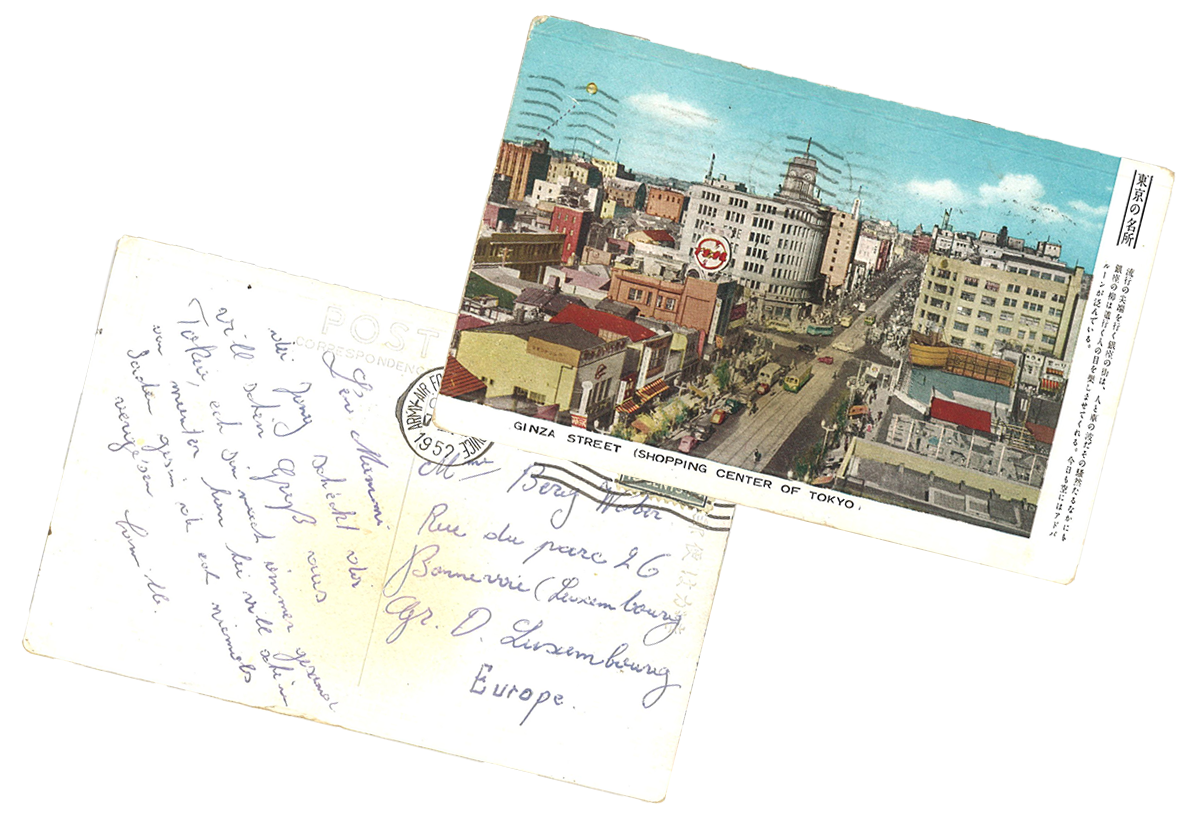
Postcard sent by Camille Berg to his mother,
showing Ginza Street, the busy shopping center of Tokyo.
“Dear Mom, your boy sends you lots of sincere greetings from Tokyo, I am still healthy and well. [I] have seen a lot of beautiful things here, which I will never forget.
Camille”
© Berg/MNHM
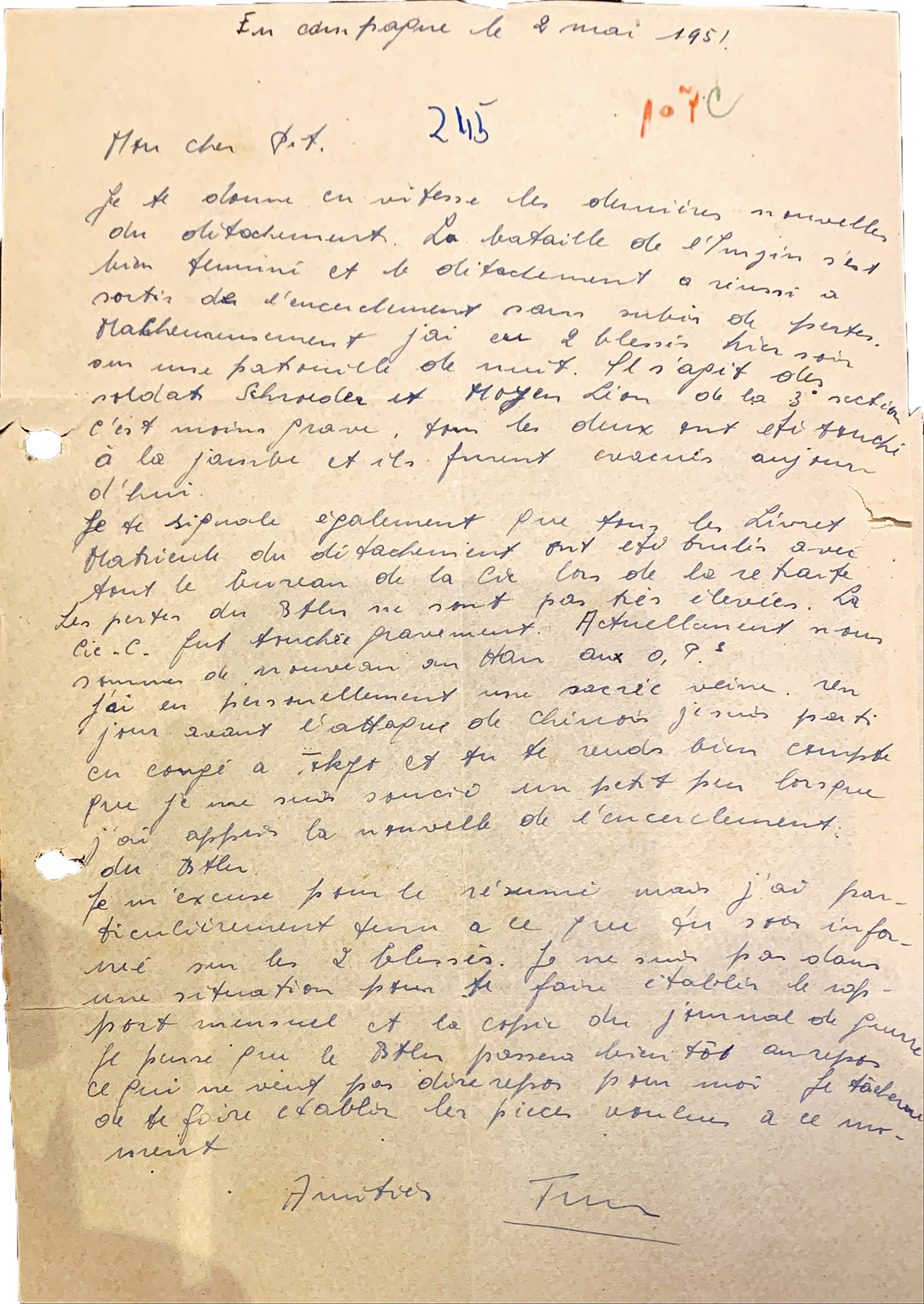
In the field, 02.05.1951. (First contingent)
Letter of Lt. Wagener to Lt. P. Dauffenbach, Luxembourg-City.
© Bard
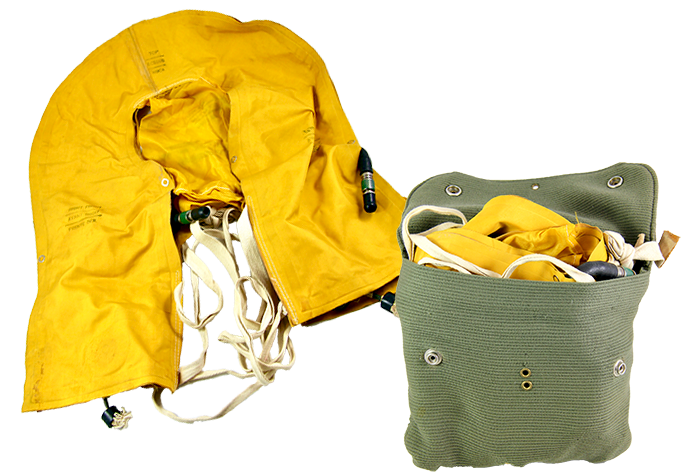
Life jacket,
probably worn by Gilbert Bucholtz while returning with the 1st Contingent on the transport ship USNS General J. H. McRae (T-AP-149).
© Buchholtz/MNHM
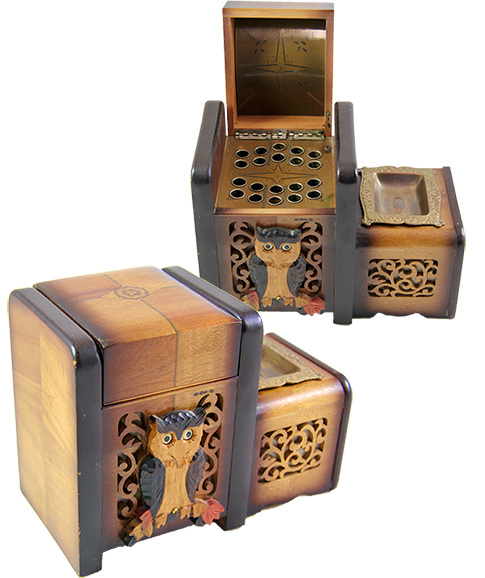
Cigarette dispenser
from Japan, with battery-operated lights and a music game that activates when opening the box.
© Buchholtz/MNHM
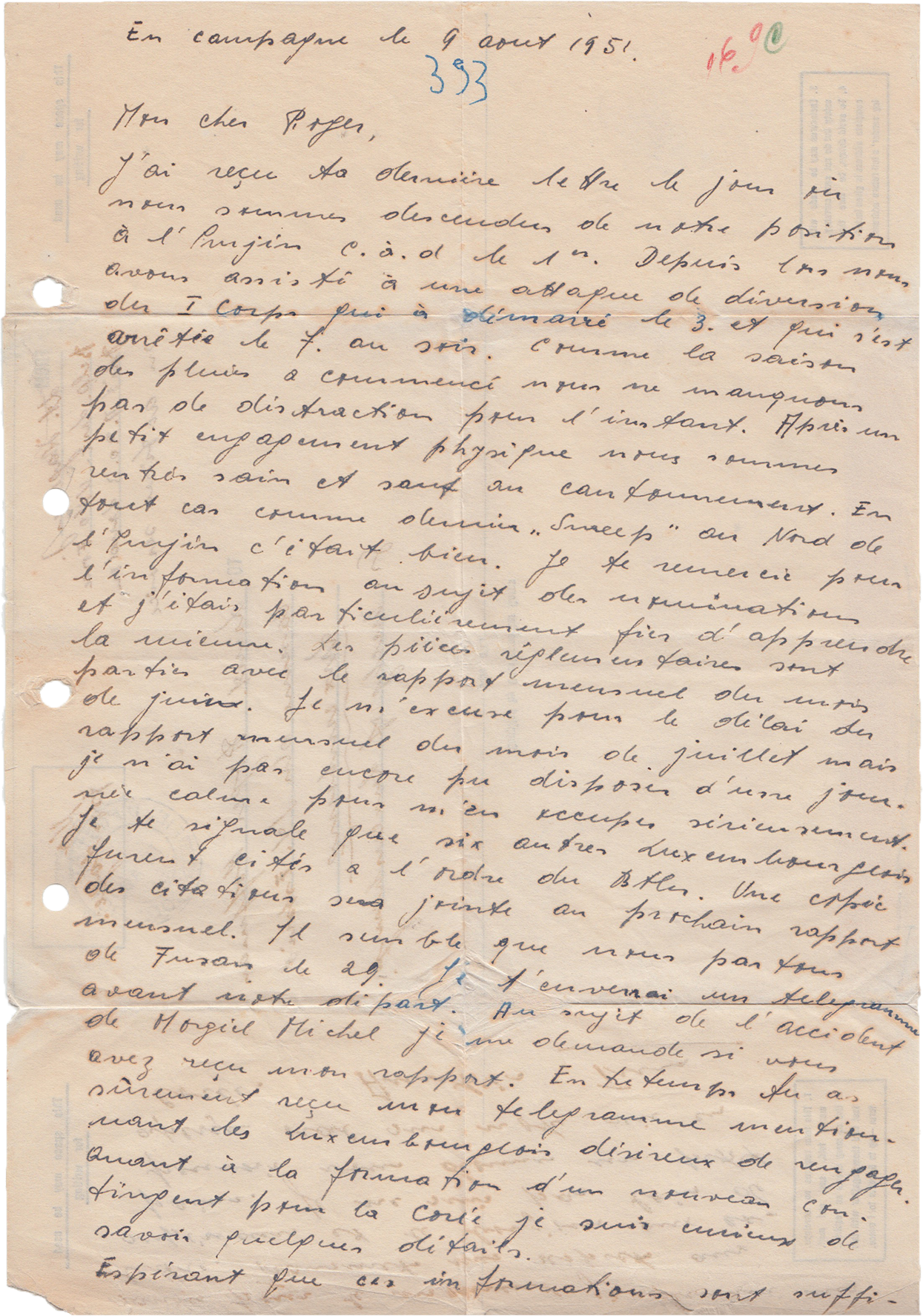
In the field, 09.08.1951. (First contingent)
Letter of Lt. Wagener to Lt. Roger Hoffman, LuxembourgCity, 09.08.1951.
© Bard
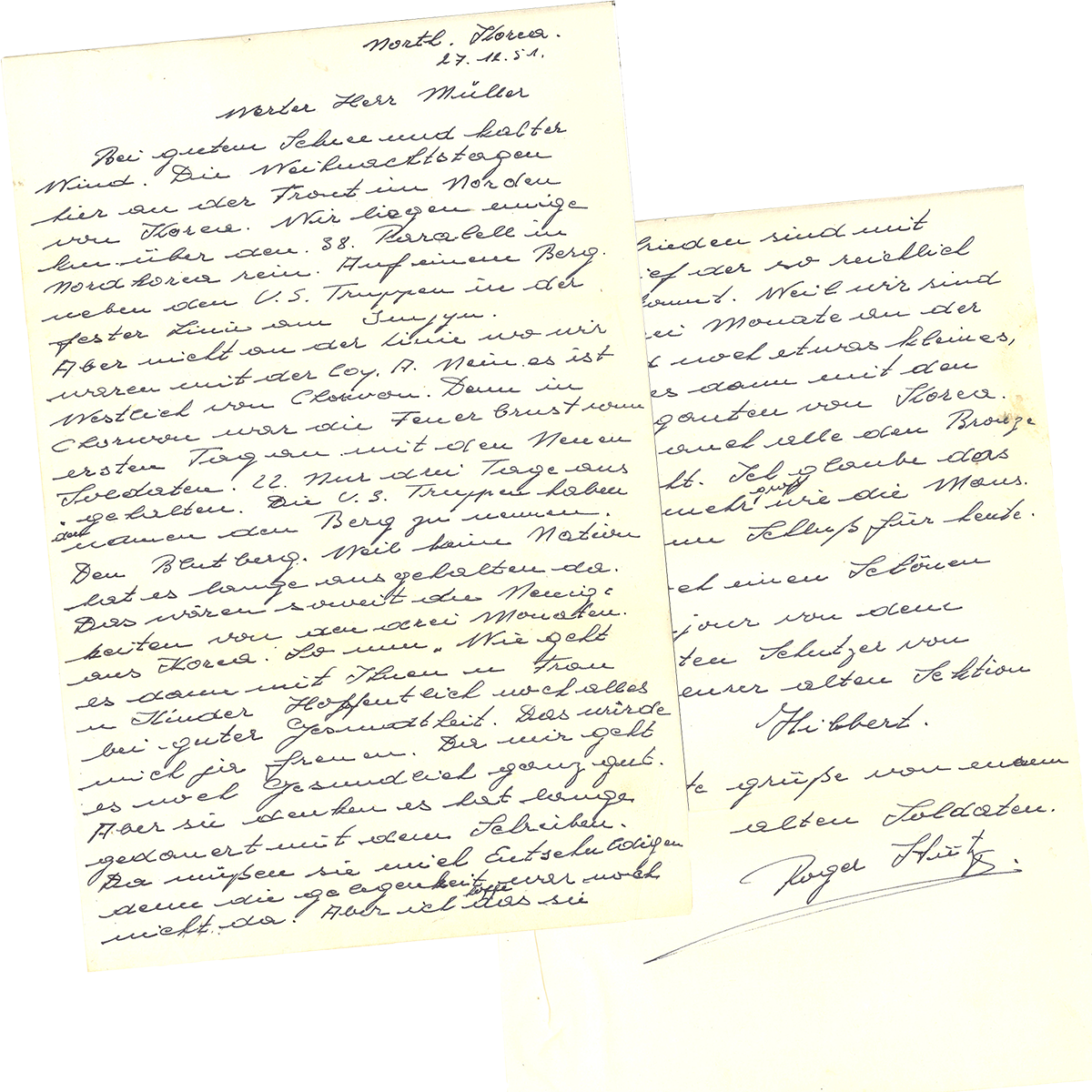
North Korea, little behind the 38e parallel, 27.12.1951.
Letter of Roger Stütz to Robert Müller.
After Robert left Korea with the First contingent in late August 1951, Roger (along with three others) stayed until the Second contingent arrived in early March 1952. This letter bears witness of the blinstering cold of the Korean Winter in 1951.
© Müller/MNHM

Lt. Jos Wagener’s personal helmet
bearing a white frontal stripe identifying him as the commanding officer.
© Wagener/MNHM
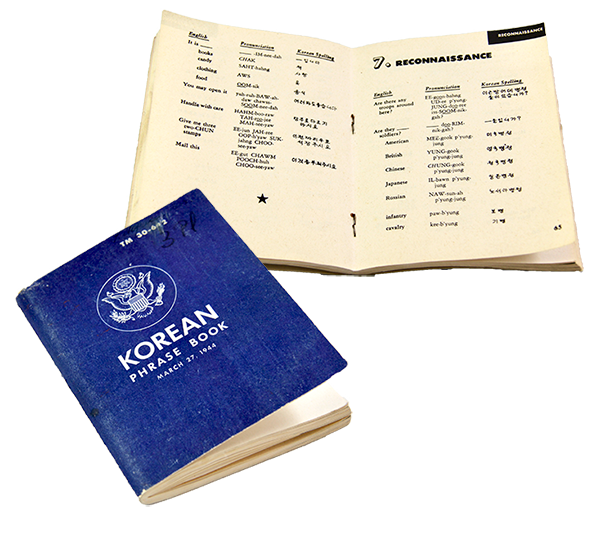
The US Army Korean Phrasebook
© MNHM
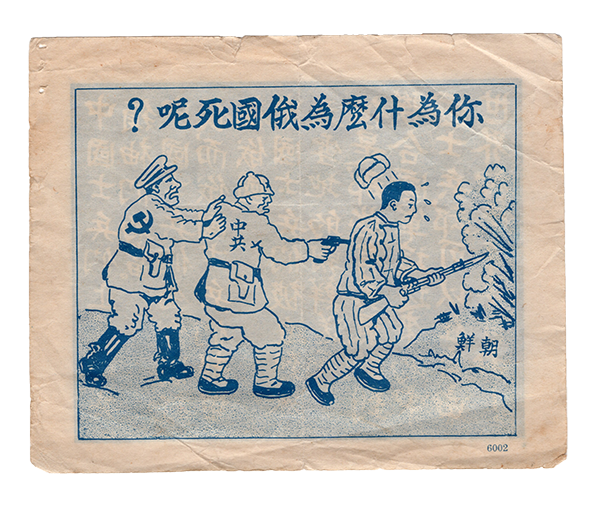
Propaganda leaflet
shows a Soviet military commissioner pushing a Chinese officer, who himself is strong-arming a Chinese “volunteer” to storm into battle. Such pamphlets intended to stir up Chinese insubordination by denouncing illegitimate foreign intervention and empowerment.
© Stoffel/MNHM
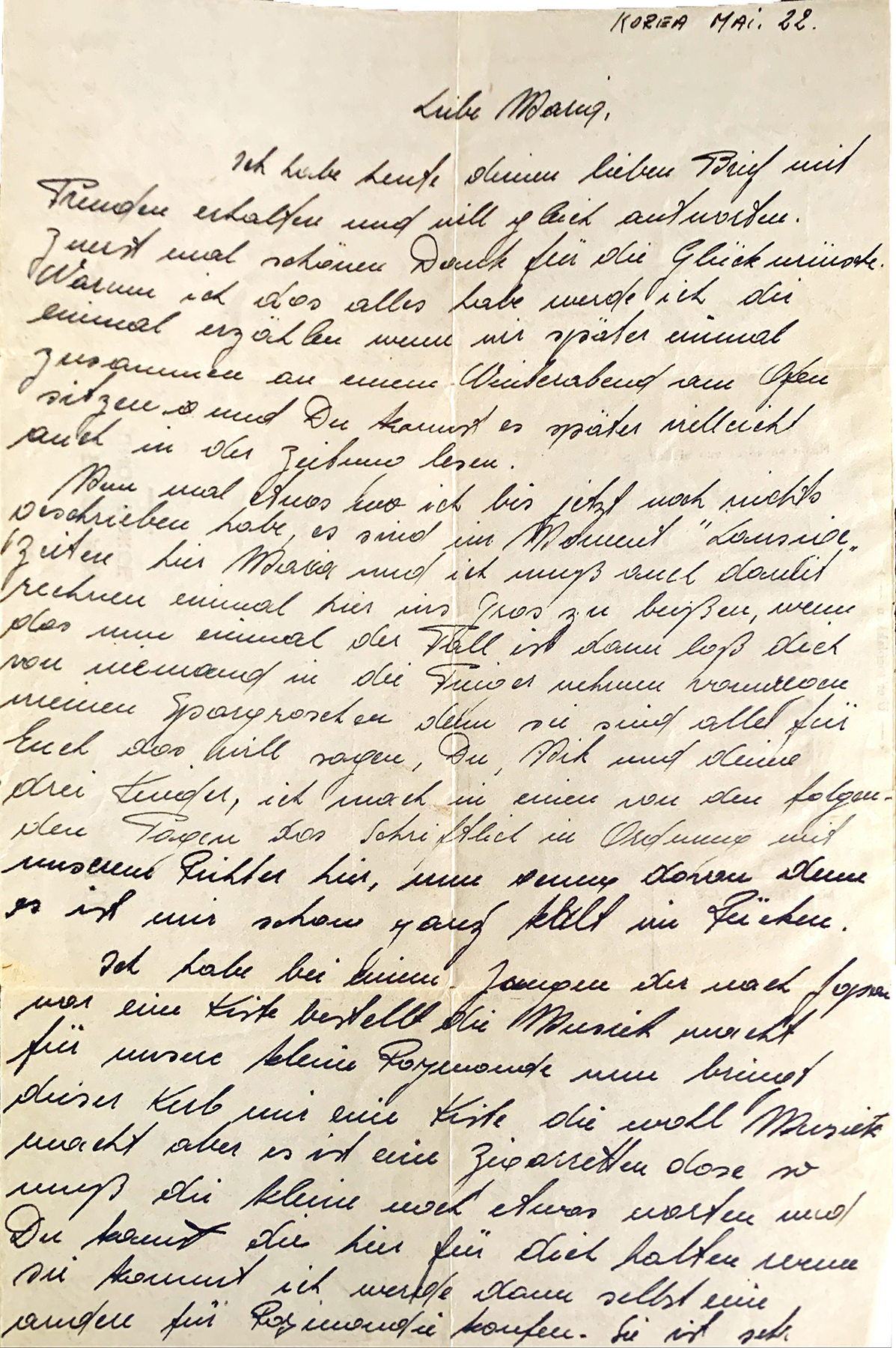
In Korea, 22.05.1952. (Second contingent)
Letter of Sgt. Raymond Beringer to his family (Maria), Hesperange.
© Bard

Robert Mores' bracelet
bearing the following inscription: “Cpl. Robert Mores V 00403 Armée Luxembourgeoise”. He was probably wearing the bracelet on the day of his death.
© MNHM
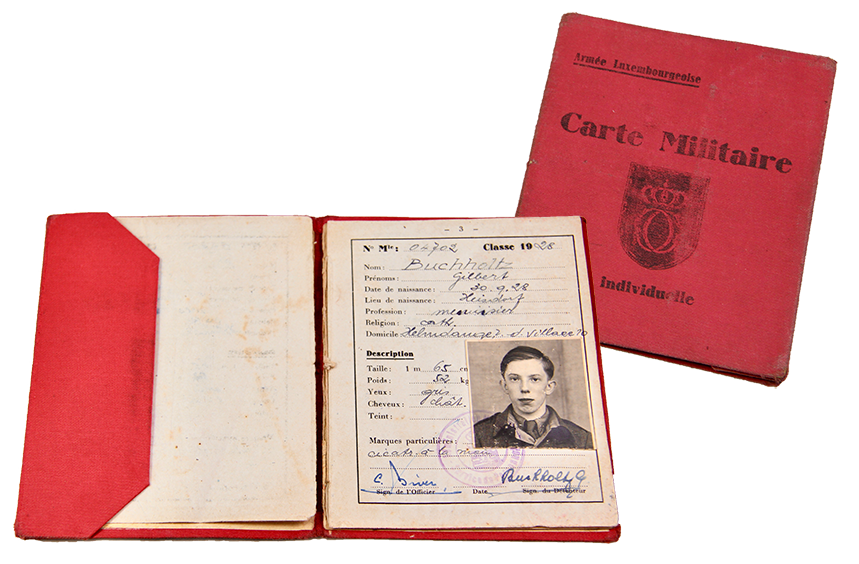
Military Pass
issued by the Luxembourgish Army at the beginning of Gilbert Buchholtz’s military service on 4 July 1947. It was vital for identification and needed to be carried at all times.
© Buchholtz/MNHM
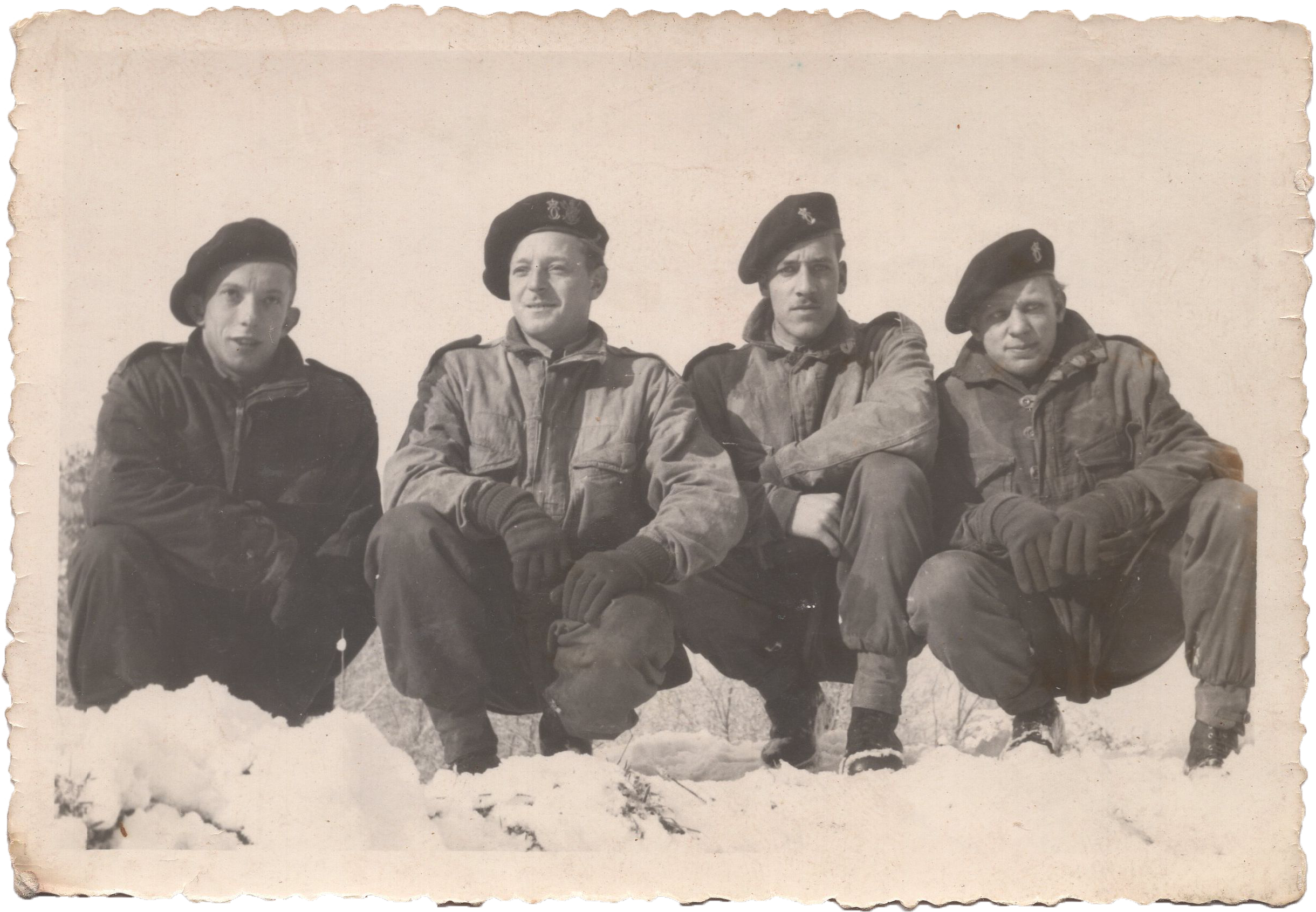
Photo of veterans
From left to right: Gilbert Buchholtz, Robert Mores, Léon Moyen, Mathias Morgiel.
© Moyen/MNHM
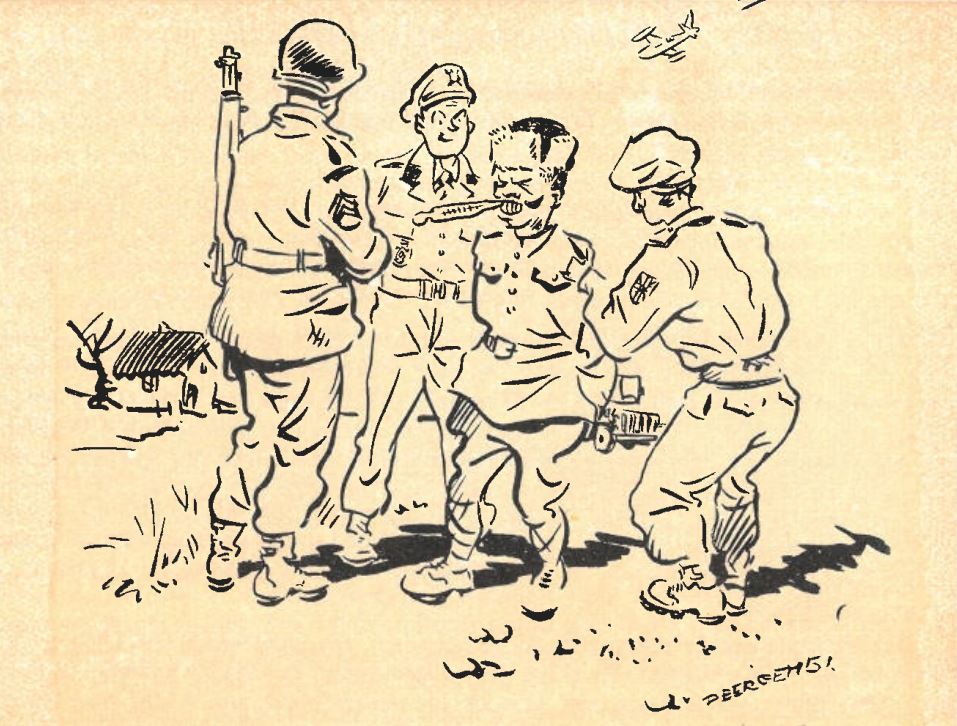
Caricatures
were popular means of critically illustrating the developments during the Korean War.
© Lettres aux Soldats/MNHM
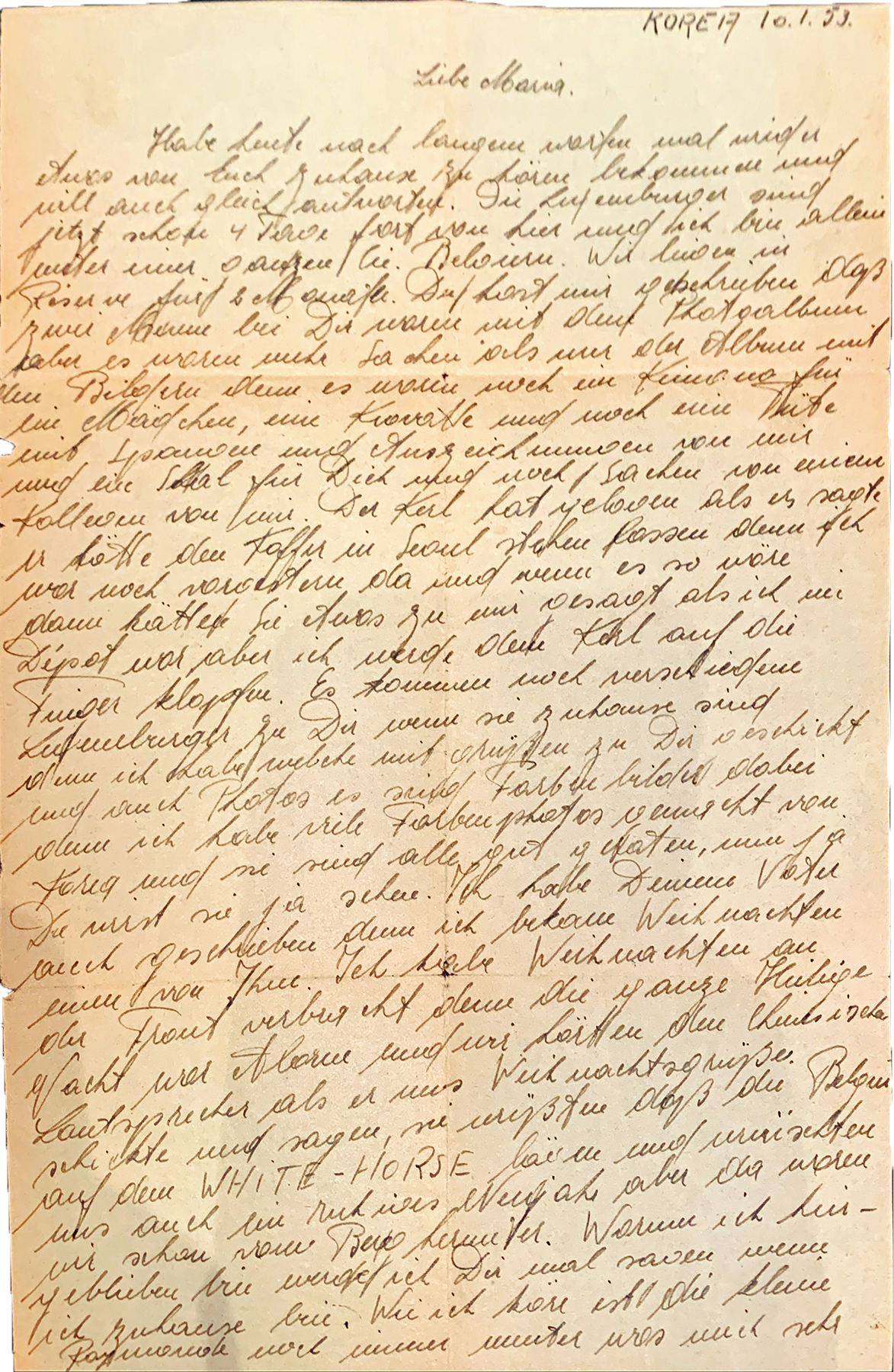
In Korea, 10.01.1953. (Second contingent)
Letter of Raymond Beringer to his Family (Maria), Hesperange.
© Bard
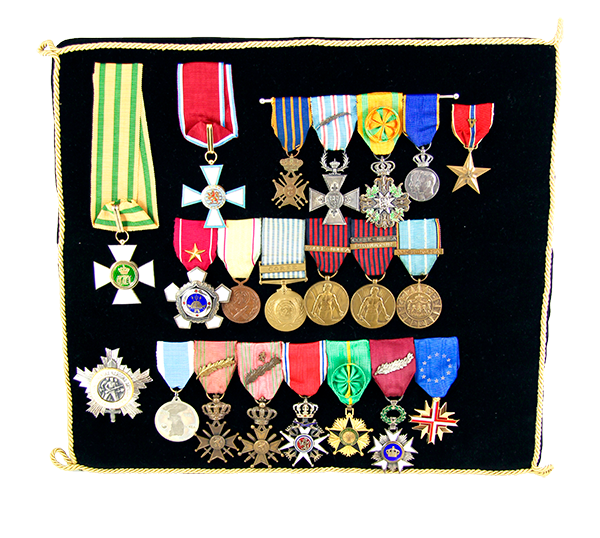
Lt. Joseph Wagener’s medal collection
displaying all the decorations received during his military career.
© Wagener/MNHM



